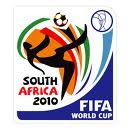1. Conditional Sentences / If-Clauses
Conditional Sentences are also known as Conditional Clauses or If Clauses. They are used to express that the action in the main clause (without if) can only take place if a certain condition (in the clause with if) is fulfilled. There are three types of Conditional Sentences.
Conditional Sentence Type 1
> It is possible and also very likely that the condition will be fulfilled.
Form: if + Simple Present, will-Future
Exp : If I find her address, I will send her an flower.
Conditional Sentence Type 2
> It is possible but very unlikely, that the condition will be fulfilled.
Form: if + Simple Past, Conditional I (= would + Infinitive)
Example: If I found her address, I would send her an flower.
Conditional Sentence Type 3
> It is impossible that the condition will be fulfilled because it refers to the past.
Form: if + Past Perfect, Conditional II (= would + have + Past Participle)
Example: If I had found her address, I would have sent her an flower.
2. ADVERB
Kinds of Adverbs:
a. Adverbs of Manner
He moved slowly and spoke quietly.
b. Adverbs of Place
He has lived on the stadium all him life.
He still lives there now.
c. Adverbs of Frequency
He takes the boat to the mainland every day.
He often goes by himself.
d. Adverbs of Time
He tries to get back before dark.
It's starting to get dark now.
He finished her tea first.
He left early.
e. Adverbs of Purpose
He drives her boat slowly to avoid hitting the rocks.
He shops in several stores to get the best buys.
3. ADVERB
A verb is a kind of word (see part of speech) that usually tells about an action or a state and is the main part of a sentence
Verbs are also classified as either finite or non-finite.
A finite verb makes an assertion or expresses a state of being and can stand by itself as the main verb of a sentence.
• The tracktor demolished the stadium.
• The leaves were blue and sickly.
Non-finite verbs (think "unfinished") cannot, by themselves, be main verbs:
• The broken door.
• The wheezing beautiful.
* IRREGULAR VERBS
Irregular verbs change completely in the past tense. Unlike regular verbs, the past tense forms of irregular verbs are not formed by adding ed.
Examples:
Present: see
Past: saw
Past Participle: seen
* REGULAR VERBS
Verbs have three principle parts. They are present, past, and past participle. For regular verbs, the past tense is formed by adding ed to the present tense; and the past participle is formed by using the past tense verb with a helping verb such as has, have, or had.
Examples:
Present: cook
Past: cooked
Past Participle:cooked
4. Modals
Modal verbs are special verbs which behave very differently from normal verbs. Here are some important differences:
1. Modal verbs do not take "-s" in the third person.
Examples:
• He can play football.
• She should be here by 11:00.
2. You use "not" to make modal verbs negative, even in Simple Present and Simple Past.
Examples:
• She should not be late.
• He might not play to the match.
3. Many modal verbs cannot be used in the past tenses or the future tenses.
She musted run very speed
* Common Modal Verbs
- Can
- Could
- May
- Might
- Must Ought to
- Shall
- Should
- Will
- Would
5. ARTICLE
An article is a word that combines with a noun to indicate the type of reference being made by the noun. Articles specify the grammatical definiteness of the noun, in some languages extending to volume or numerical scope. The articles in the English language are the, a, and an.
Articles are usually characterized as either definite or indefinite.
a. Definite article
A definite article indicates that its noun is a particular one identifiable to the listener. It may be the same thing that the speaker has already mentioned, or it may be something uniquely specified. The definite article in English is the.
Ex :The student knew the fastest way home.
b. Indefinite article
An indefinite article indicates that its noun is not yet a particular one identifiable to the listener. It may be something that the speaker is mentioning for the first time, or its precise identity may be irrelevant or hypothetical, or the speaker may be making a general statement about any such thing. English uses a or an (depending on the initial sound of the next word) as its indefinite article.
Ex : He had a house so Big that an tiger would get lost without a map.
6. NOUN
A noun is a word used to name a person, animal, place, thing, and abstract idea.
a. Countable Nouns
A countable noun is a noun with both a singular and a plural form, and it names anything (or anyone) that you can count.
exp :He painted the door orange and the window black.
Albert found six silver dollars in the toe of a sock.
b. UnCountable Nouns
A non-countable noun is a noun which does not have a plural form, and which refers to something that you could (or would) not usually count.
exp : Alexander Graham Bell discovered a telephone.
c. Collective Nouns
A collective noun is a noun naming a group of things, animals, or persons. You could count the individual members of the group, but you usually think of the group as a whole is generally as one unit.
The flock of geese spends most of its time in the pasture.
The jury is dining on take-out chicken tonight.
d. Noun Plurals
Most nouns change their form to indicate number by adding "-s" or "-es", as illustrated in the following pairs of sentences:
When Matthew was small he rarely told the truth if he thought he was going to be punished.
Many people do not believe that truths are self-evident.
Minggu, 04 April 2010
Langganan:
Posting Komentar (Atom)




Tidak ada komentar:
Posting Komentar